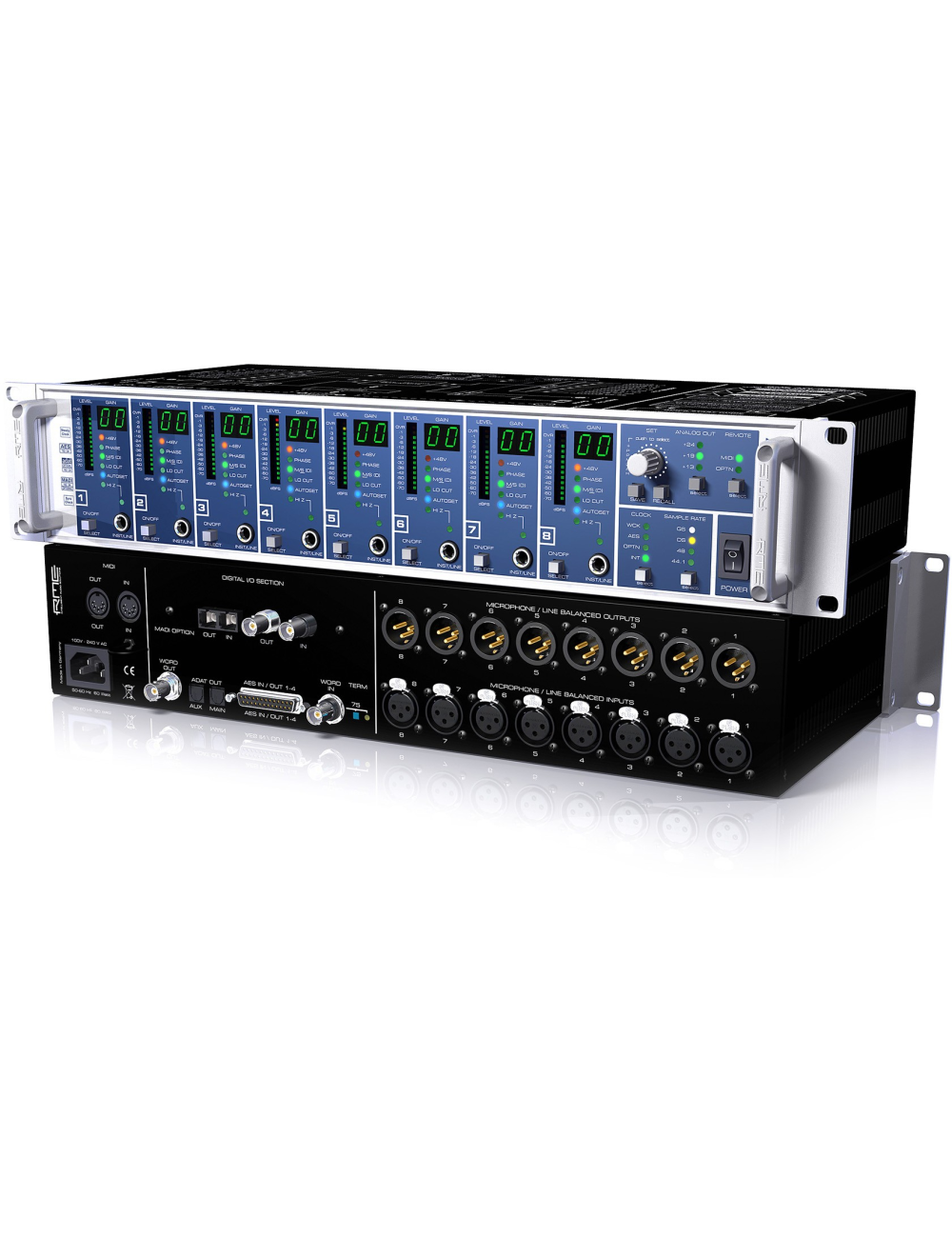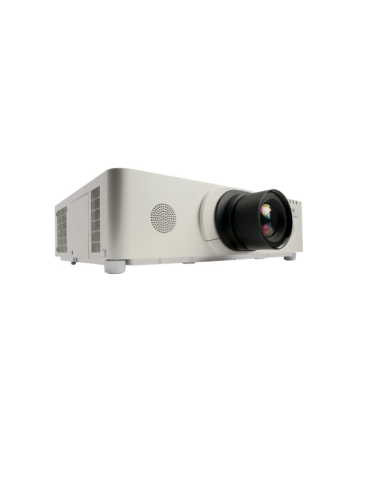

MICSTASY
Manufacturer's warranty: 2 years
Free delivery from €99
Easy payment: satisfied or refunded
Need help ?
This product is no longer available for sale
Preampli micro and DA 8 channels, ADAT, AES
Preampli 8 channel converter 192 kHz
Micstasy is a micro/line preamp and an AN converter combining many product-specific functions RME. It can be used in analog (micro/line inputs to line outputs) and digital (micro/line inputs to digital outputs) simultaneously. This device is fully controlled in MIDI and MIDI via MADI.
The innovative concept of Micstasy allows the amplification and digitization of all analog sources. Whether they are line signals, high impedance instrument, dynamic micro, static micro or tape micro, Micstatsy will be the ideal companion. The incoming signal is transmitted simultaneously to analog outputs that obsolete the use of a splitter in live configuration. All functions can be controlled in MIDI (via an external port or via MADI) allowing the device to be placed close to the sources for a seamless audio quality.
The optional I64 MADI card offers the possibility to chain several Micstasy series (up to 8). The 64 channels will then be available from the last interface on a single cable. It is also possible to cascade Micstasy and Micstasy ADI-8 QS in the same way.
In a standard 19-inch rack 2 U box, the Micstasy offers many high-quality features specific to products RME : Intelligent Clock Control (ICC), SynCheck, SteadyClock, TotalGain, AutoSet, MIDI over MADI and command via MADI and MIDI.
The Micstasy can be fully controlled by MIDI and all status data can be transmitted via MIDI. Each Micstasy can receive a separate identifier allowing the control of several units from a single MIDI channel. MIDI control is also available from a Digidesign Pro Tools, Yamaha M7C or PM5D system. It is also possible to drive them from a DM-1000 or DM-2000.
The Micstasy uses the latest Cirrus Logic converters offering exceptional noise and distortion ratio characteristics. But the main difference compared to the other AN converters is the innovative digital filtering allowing to reach a time limit of only 12 samples: 0.25 ms to 1FS (48 kHz), 9 samples: 0.09 ms to 2 FS (96 kHz) and 5 samples: 0.026 ms to 4 FS (192 kHz). These values are far below those of the market's most expensive converters. They represent a significant step forward in reducing latency for studio recording solutions. At 2 FS or 4 FS induced latency can be simply ignored. In conjunction with the ADI-8 QS, with a late NA conversion of 5 to 10 samples, the analog monitoring/digital becomes similar to a purely analog monitoring.
Some preamps include a limiter to prevent saruration of the AN conversion floor. To avoid degrading the quality of preamplis, such a solution was not used for the Micstasy. However, the Micstasy gain being fully digitally controlled, it can be set automatically. Indeed, we get a perfect protection against saturation without going through an additional electronic circuit. In the configuration menu, the threshold above which the gain reduction applies can be set to the following values: -1, -3, -6 and -12 dBFS. Any gain change will be displayed immediately on the gain display. Even when this AutoSet function is enabled, the gain can be changed manually.
MADI I64 Optional Card
The I64 MADI card allows the Micstasy to benefit from 64 input/output channels in coaxial and optical MADI mode, operating parallel to the AES/EBU outputs and ADAT. The card with a coaxial and optical connector, the interface automatically switches to the input receiving a valid signal. A perfect redundancy is thus ensured by automatic switching from one source to another in case of loss of one of the signals.
The MADI entry can operate as an optional clock entry or simply allow for the tracing of several units. The Micstasy manages only 8 channels, the other 56 channels are free to transmit the signal. We can cascade several Micstasy in series. The incoming MADI signal remains the same bit for bit, only an 8-channel block is replaced by the Micstasy signal. The 64 channels are available at the exit of the last Micstatsy.
The I64 MADI card also allows remote control of preampli parameters. It also allows MIDI transmission via the MADI link.
When several units are connected in series, the MADI entry/output of each Micstasy results in a delay of 3 samples (0.68 ms). As a result, the data transmitted to MADI are delayed when the last Micstasy is released. This problem is solved by the Delay Compensation function. The I64 MADI also offers the possibility to use 8 channels as digital return channels and allow to send a signal to AES outputs via MADI and ADAT micstasy. By joining a N/A converter (such as ADI-8 DS) you can benefit from 8 channels of back on stage.
Quick Compare
Product |
 MICSTASY
MICSTASY
|
 LX601i
LX601i
|
Availability |
|
|
Price |
€3,690.00
€3,527.00
|
€3,684.00
|
Description |
This product is no longer available for sale. |
This product is no longer available for sale. |
Contrast |
3000:1 | |
Input connectors |
HDMI | |
Dimensions |
476 x 498 x 147 | |
Lifetime |
2500H to 3000H in eco mode | |
Brightness |
6000 Lumens | |
Lamp Type |
UHP | |
Weight |
8.9 kg | |


